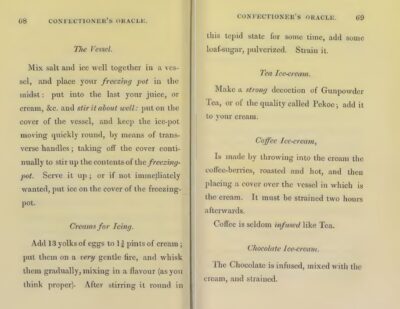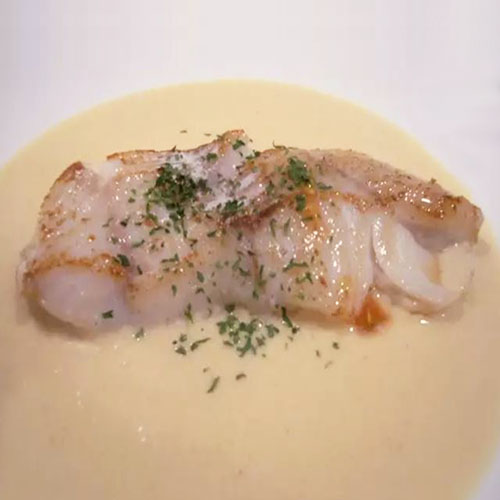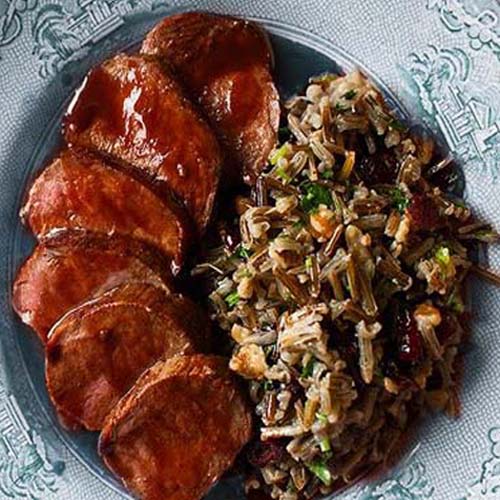
If you were a celebrity wedding planner in 1812, you might want your wedding ices made by Gunter’s Tea Shop.
A foodie destination from the mid 1700s, Gunter’s made a range of ice creams and confectionery that would rock a dessert aficionado’s world today let alone at a time when no one had fridges, or even electricity. The public must have found the idea of an ice cream sundae astonishing. Obviously such luxury did not come cheaply.

Trade card for then Pot and Pineapple
Known initially as The Pot and Pineapple, Gunter’s was established at 7-8 Berkeley Square in 1757 by Domenico Negri, an Italian émigré who became the ‘godfather’ of English ice-cream. Bringing impressive Continental confectioners skills with him, Negri was soon the go-to guy for society hostesses who wanted to impress jaded dinner guests. His business was so popular, he could not manage alone, and took on partners: Mr. Witten early on, and then James Gunter in 1777. Eventually Gunter became the owner and changed the name of the business.
Gunter’s alumni went on to write several cook books, including The Complete Confectioner (1787) by Frederick Nutt; The Italian Confectioner (1820) by William Jarrin; The Confectioner’s Oracle by William Gunter, a work so unwittingly silly it deserves to be read for fun; and Gunter’s Modern Confectioner (1861, 1871) by William Jeanes. Jarrin’s book is a great place to start if you want to experiment with Regency era recipes.
 The ices menu at Gunter’s included favors like elderflower, nayou, white coffee, and brown bread, along with perennial favorites chocolate, pistachio and cherry, just to name a few. Ices were served sundae-style in a small cup known as a tasse à glace. Gunter’s even offered double scoop options for customers who wanted to sample two flavors.
The ices menu at Gunter’s included favors like elderflower, nayou, white coffee, and brown bread, along with perennial favorites chocolate, pistachio and cherry, just to name a few. Ices were served sundae-style in a small cup known as a tasse à glace. Gunter’s even offered double scoop options for customers who wanted to sample two flavors.
Ice cream was made by sitting pails of flavored cream in a large freezing pot of ice and salt, and stirring often with a ‘spaddle’. This sounds relatively simple, except that ice had to be hauled by horse and wagon from Scotland, or shipped from Norway and then housed in ice wells. The labor and time involved meant that frozen desserts remained a luxury until the early 20th century.

At the best balls, fashionable people served ices between dance sets as a refreshment. The lady in the 1824 fashion plate below appears to be eating a chocolate ice. Perhaps this was made with one of the recipes in William Gunter’s book (left).
Regency enthusiasts discovered Gunter’s long ago from Georgette Heyer’s meticulously researched romances; among them Frederica, Regency Buck, Cotillion and Venetia.
In my novel, Alverstone, as a nod to Heyer, I set a scene there myself, in which my heroine, Charlotte “… ordered a combination of white coffee and noyau—the very best smuggled from Poissy.”
That’s a flavor I would love to try!

Ackermann’s Repository, 1824
Alas, Gunter’s is no more. Sources vary on when it finally closed for business: some suggest the early 1920s.
However, it’s legacy lives on, and was brought into currency recently in Episode 2 of Bridgerton, “Shock and Delight” – which offered a glimpse into the opulence of Gunter’s as the premier destination for ice cream in Regency London.



